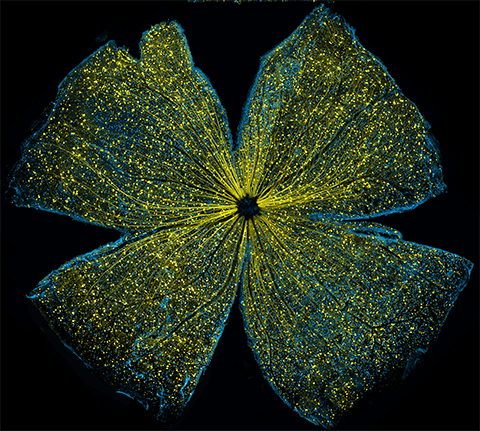Calcium channel linked to cancer drug resistance
Chemotherapy tumor resistance develops after long-term regimens of the platinum-containing anticancer drug carboplatin. Scientists have observed an enlarged cell morphology and involvement of T-type calcium channels in resistant ovarian cancer cells. Sooyun Kim and researchers at Seoul National University wanted to find out if these characteristics also relate to carboplatin resistance seen in retinoblastoma, an aggressive childhood cancer. They published their findings in a recent Journal of Biological Chemistry article.

Immunofluorescence staining and pharmacological inhibition experiments identified the Cav3.3 channel as the overexpressed calcium channel subtype that contributes to the sustained currents. The authors further showed that messenger RNA expression levels only for Cav3.3 increased after carboplatin exposure, while the levels for the other Cav3.1 and Cav3.2 subtypes slightly decreased in the resistant cells relative to the original retinoblastoma strain.
Finally, the researchers determined that treating the resistant retinoblastoma giant cells with a Cav3.3 inhibitor increased their sensitivity to carboplatin. They only observed this increase in carboplatin sensitivity in the resistant cells and not in the original retinoblastoma strain, indicating that Cav3.3 plays a specific role in drug resistance.
Cav3.3 could potentially be a target for the treatment of carboplatin-resistant retinoblastoma. Future experiments will help identify additional proteins and pathways that may connect Cav3.3 to chemotherapeutic resistance in retinoblastoma and whether the involvement of Cav3.3 over the other channel subtypes is observed in other cancers.
Enjoy reading ASBMB Today?
Become a member to receive the print edition four times a year and the digital edition monthly.
Learn moreGet the latest from ASBMB Today
Enter your email address, and we’ll send you a weekly email with recent articles, interviews and more.
Latest in Science
Science highlights or most popular articles

Exploring the link between lipids and longevity
Meng Wang will present her work on metabolism and aging at the ASBMB Annual Meeting, March 7-10, just outside of Washington, D.C.

Defining a ‘crucial gatekeeper’ of lipid metabolism
George Carman receives the Herbert Tabor Research Award at the ASBMB Annual Meeting, March 7–10, just outside of Washington, D.C.

The science of staying strong
Muscles power every movement, but they also tell the story of aging itself. Scientists are uncovering how strength fades, why some species resist it and what lifestyle and molecular clues could help preserve muscle health for life.

Bacteriophage protein could make queso fresco safer
Researchers characterized the structure and function of PlyP100, a bacteriophage protein that shows promise as a food-safe antimicrobial for preventing Listeria monocytogenes growth in fresh cheeses.

Building the blueprint to block HIV
Wesley Sundquist will present his work on the HIV capsid and revolutionary drug, Lenacapavir, at the ASBMB Annual Meeting, March 7–10, in Maryland.

Gut microbes hijack cancer pathway in high-fat diets
Researchers at the Feinstein Institutes for Medical Research found that a high-fat diet increases ammonia-producing bacteria in the gut microbiome of mice, which in turn disrupts TGF-β signaling and promotes colorectal cancer.

